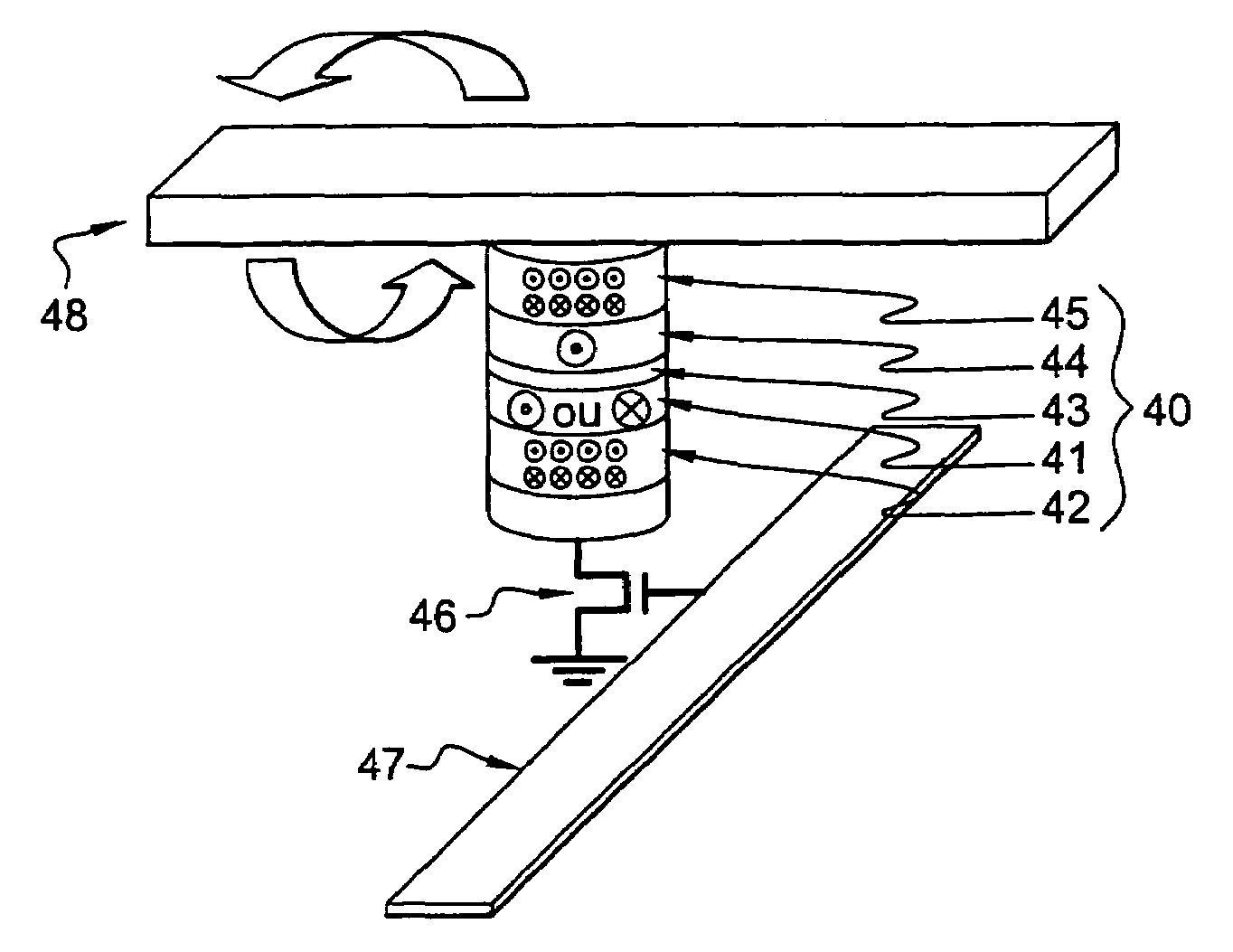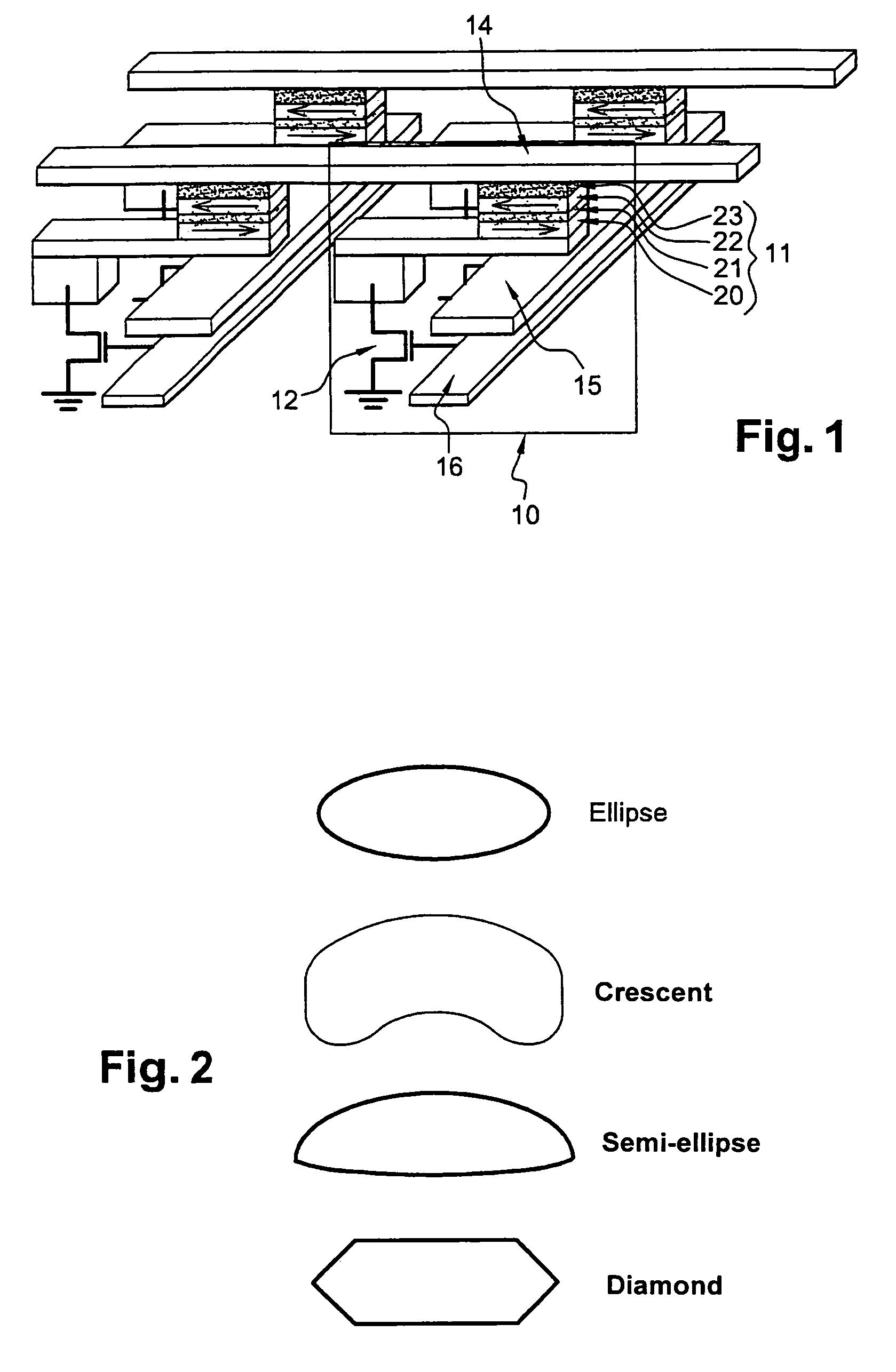Magnetic memory with a magnetic tunnel junction written in a thermally assisted manner, and method for writing the same
a magnetic tunnel junction and memory technology, applied in the field of magnetic memories, can solve the problems of limited capacity, addressing errors in writing, and limiting the possibility of integration, and achieve the effect of low power consumption and thermal and temporal stability
- Summary
- Abstract
- Description
- Claims
- Application Information
AI Technical Summary
Benefits of technology
Problems solved by technology
Method used
Image
Examples
Embodiment Construction
[0056]FIG. 3 shows the magnetization orientations of the different layers that form a memory point, in particular in the prior art. According to the latter, the storage layer (30) consists of a stack comprising at least one ferromagnetic layer (32) and an anti-ferromagnetic layer (31). These two layers are deposited in such a manner that a magnetic exchange coupling is established between the two layers. The stack of the complete memory point also comprises at least one insulating layer (33) and a reference layer (34), advantageously combined with a trapping layer (35). This architecture is described by the term trapped storage layer. Multiple advantages are afforded by this architecture:[0057]the stability limit of the memory points is extended;[0058]insensitivity to external magnetic fields;[0059]possibility of effecting multi-level storages.
[0060]According to the invention, the memory point utilizing a trapped storage layer no longer has an elongated but a circular form and more ...
PUM
 Login to View More
Login to View More Abstract
Description
Claims
Application Information
 Login to View More
Login to View More - R&D
- Intellectual Property
- Life Sciences
- Materials
- Tech Scout
- Unparalleled Data Quality
- Higher Quality Content
- 60% Fewer Hallucinations
Browse by: Latest US Patents, China's latest patents, Technical Efficacy Thesaurus, Application Domain, Technology Topic, Popular Technical Reports.
© 2025 PatSnap. All rights reserved.Legal|Privacy policy|Modern Slavery Act Transparency Statement|Sitemap|About US| Contact US: help@patsnap.com



